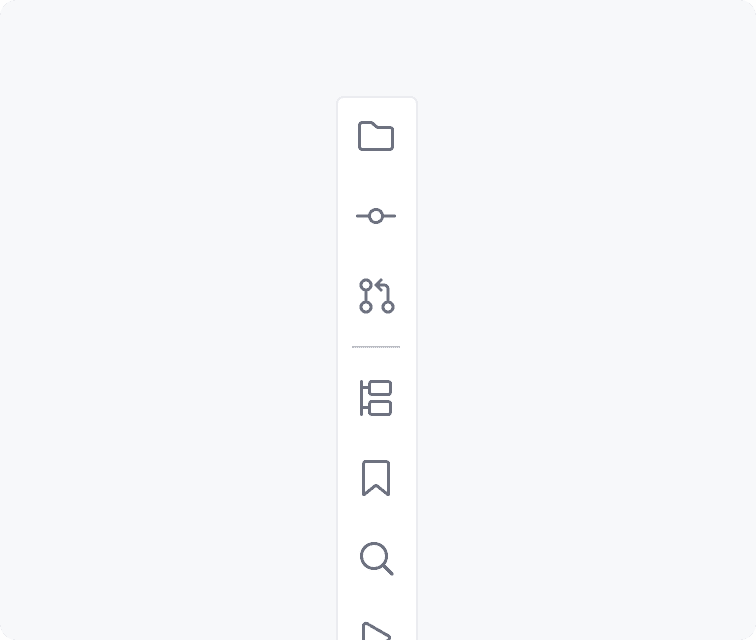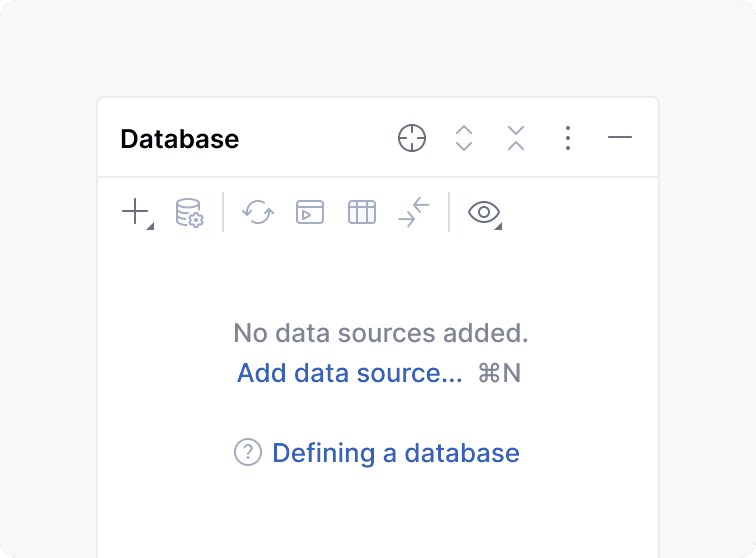Tool Window
A tool window is a pane inside the main IDE window. For information about tool windows, see IntelliJ IDEA Web Help. For information about implementing tool windows, see Tool Windows.

When to use
Tool windows provide access to information, tools, and services that support coding. They let users manage the project, run and debug applications, view git changes, and work with external systems — all without leaving the main workspace.
Tool window structure

Tool window name
The name should be short and descriptive, preferably not longer than two words.
Use title-case capitalization.
Provide an abbreviation if a common one exists when tool window names are shown in the stripes. For example,
Pull RequestsbecomesPR.
 |  |
Icon
Add an icon for the tool window button. The icon should be created in two sizes: 20×20px and 16×16px, grey, and monochromatic. See how to create icons in the icons guidelines.
Icon badge for feedback
Show a colored badge above the icon if the tool window content changes and can contain different types of feedback, for example, new updates or errors.
Do not change the icon for the tool window button when the content changes.

Tabs
Add tabs to group related content or create similar instances, like run sessions, history for files, find results. The tabs for similar entities should be closable.

Toolbar
Add a toolbar for frequently used actions and filters. For more details, see the toolbar guidelines.
How to use
Visibility
If a tool window has no content yet, show its button by default only if the window contains basic functionality that is likely to be used for all projects, for example, Version Control or Problems. Otherwise, hide the tool window button by default. Hidden tool windows are still available under More tool windows menu.
Correct  | Incorrect  |
Don't show the tool window button if the tool window is not relevant to the current project configuration. For example, don't show the Maven tool window for a project without Maven configuration files.
Orientation
Vertical window
Vertical tool windows work better for trees, for example, Project, Structure, or Maven tool windows.

Horizontal window
Horizontal tool windows work better for tables, wide content, or master-detail panels, for example, Git Log, Terminal, or Problems.

Empty state
If a tool window has no content yet, show empty state to help users start working with the tool window.
Correct  | Incorrect  |